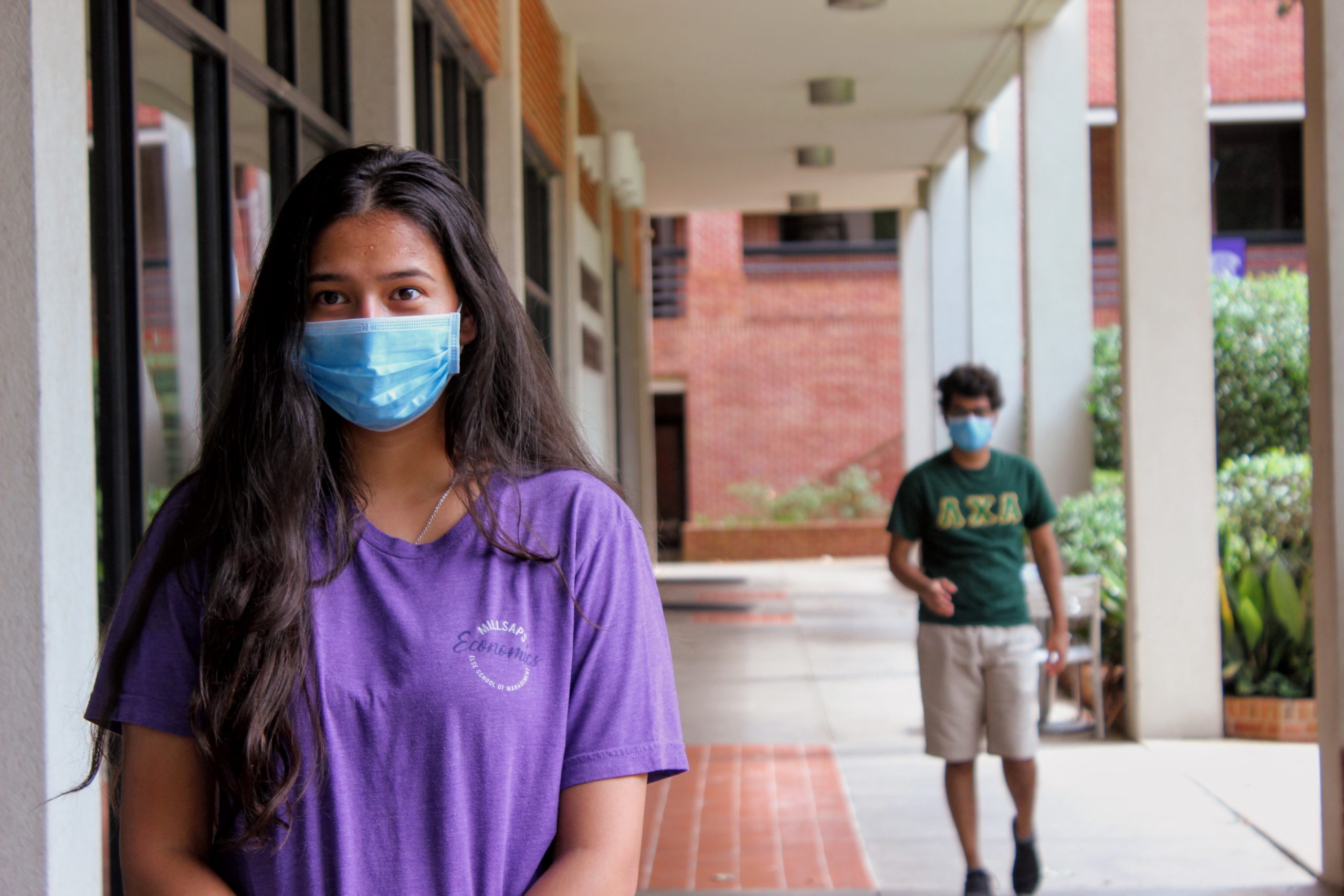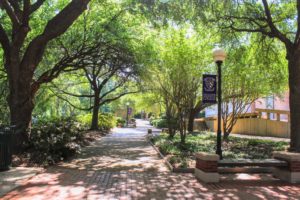If you are a student at Millsaps, then you’ve heard of the Bacot Plague. Every year, like clockwork, residents of Bacot Hall fall ill with flu-like symptoms. Though its origins are unknown, the Bacot Plague seems to spread by way of contact between students who share the living space. Students who contract the Plague usually spend a day or two chugging Nyquil and Emergen-C and missing a day or two of classes in the process. Now, replace the “Bacot Plague” with the coronavirus and the decision to return campus in August becomes much more alarming.
While the Bacot Plague may be nothing more than the flu at its worst, Yale Medicine reports that the coronavirus includes a family of seven known viruses that cause respiratory tract illnesses that range from the common cold to such potentially deadly illnesses such as severe acute respiratory syndrome (SARS). According to the World Health Organization (WHO), current evidence suggests that Covid-19 spreads between people through direct, indirect (contaminated surfaces), or close contact with those infected via mouth and nose secretions. They also note that the incubation period for the virus is thought to extend to 14 days, with a median time of 3-4 days from exposure to symptom onset.
When assessing this information, the situation of on-campus living and in-person classes becomes clear: there will be students who become infected with the coronavirus on Millsaps campus no matter how many preventative measures are put into place. Since it takes around four days of exposure for someone to begin to show symptoms (if they show symptoms at all), these infected persons will unknowingly spread the virus to others.
On July 20, President Pearigen released a statement titled, “A Commitment to Our Students,” regarding the reopening of campus. In this statement, he gives a list of measures being taken to prevent the spread of coronavirus at the college which includes social distancing when possible, mandated face masks, etc. However, many of these measurements are at best the bare minimum, while some measurements increase the likelihood of spreading the virus. When listing preventative measures for Institutions of Higher Education, the CDC states that the lowest risk for the spread of the virus within on-campus housing is closing residents’ halls; the highest risk is having residents’ halls open at full capacity. In contrast to minimizing the occupancy of dorms on campus, Millsaps is requiring most students to now have a roommate when they previously did not. The college claims that this is to provide quarantine rooms to students who contract the virus, but the effort seems counterintuitive.
When the announcement was made that Millsaps would hold in-person fall classes, I made the very difficult decision to not live on campus. For me and many other students, the possibility of paying for on-campus housing only to be sent home without a refund puts us in a vulnerable financial position. In my mind, the decision to live on campus is the very definition of high risk, low reward.
The college also has a plan to cut the in-person semester short and transition to online classes following Thanksgiving break. Dean of Students, Demi Brown states, “classes will transition to online-only following the Thanksgiving holiday in an effort to reduce on-campus density following holiday travel.” However, students are on holiday—right now. It is summer break and I have seen multiple Millsaps students enjoying their summer at the beach and other vacation places. Also, students who do not live near the campus will have to travel from their home states (in some cases home countries) to attend classes on campus in the fall. If you think about it, the policy seems contradictory—the logic is not there.
I do recognize that for some students Millsaps campus may be one of the few places for them to safely and effectively pursue higher education, and not all students live in an environment that is outfitted for online classes. However, there are many ways the college could have addressed these concerns apart from having all students return to campus for in-person classes. For example, Millsaps could have allowed students with special circumstances to return to campus, in the same way that some international students remained on campus once classes transitioned online in Spring 2020—why have all students return to campus? Why not begin the fall semester with online classes, when we will likely end up there anyway if COVID-19 cases continue to increase? Millsaps’ motivation is simple—money.
President Pearigen confirms as much in his July 20th statement: “[O]ur conditions for on-campus instruction enable the institution to address its budgetary challenges and meet its financial obligations. If circumstances are not prohibitive, bringing students back to campus is not putting finances ahead of health, safety, and welfare, yet is imperative, nonetheless. It is the right thing to do from an educational standpoint for our students and it helps protect our financial well-being. If students do not return to campus, we will face budgetary challenges unlike any before.”
While I understand that Millsaps must protect its finances with recent low enrollment, I personally do not support returning to campus, which is an indicator that Millsaps is putting finances ahead of the health of its students. Even though the college suggests otherwise, this action was made clear when they announced that students who did not return to campus after Thanksgiving break, though classes will be online from that point on, will not receive housing or dining refunds. Because essentially it is the student’s “choice” not to return to campus. To be clear, it is not just students whose health is put on the line by reopening campus in the fall. The health of all Millsaps’ faculty and staff, from the custodial workers to professors, is at risk as well.
According to the CDC, those who do contract the virus are expected to quarantine for at least ten days after experiencing their first symptom. This means that students and professors who contract the virus will be absent from class for 10 or more days. The school has yet to release an official email or notice on how classes will proceed in these situations.
In my previous opinion piece, I stated how excited I was to return to campus. During that time, it seemed that the coronavirus situation was sure to improve if the country continued to practice preventative measures. However, as of July 21, 2020, the Mississippi department of health reported a total of 46,000 confirmed cases, and 1,390 confirmed deaths for the state; 1,500 new cases were also recorded. People around the country still refuse to social distance and wear masks; some go as far as claiming the virus is a hoax. As anyone who pays attention to the media will notice, states are having difficulty persuading citizens to protect themselves. In the same respect, I don’t imagine colleges will be able to monitor their students, no matter how many regulations and safety protocols are implemented.
I truly love this college, and I do not want to see it fail due to financial issues, but I also do not want to see any of my fellow students or professors become seriously ill or die from coronavirus. For a collective group of highly intelligent individuals, the Administration’s decision to re-open campus in the fall is not the brightest when considering the health and safety of everyone else.


This is such a thoughtful, well-articulated piece. I think one of the most valid points made in favor of Millsaps’s financial motives being their primary motives is their refusal to refund the housing and meal plan costs post Thanksgiving break. Additionally, they are committed to a scholarship deduction policy for all students choosing to live on campus, regardless if this decision is made for the health of themselves and of their loved ones Millsaps has not budged on this policy and instead suggests that students direct concerns to the financial aid office, when this is a policy that has adverse effects on all of their students and demonstrates that they are putting their financial concerns over safety concerns of their students. While I am not privy to the data of retention numbers, I can guess that Millsaps would be gaining some local students, therefore combating the reverse effect of low enrollment, if they would consider lowering or suspending this policy for this unprecedented situation. Overall, great piece with wonderful thoughts; just added a few of my own!
Really appreciate this comment And I agree with everything you said. I think communication with the student body is key to combat all the confusion that’s been circulating the school’s handling of the virus. If administration would be more open with the student body, I really believe a lot of this could be cleared up.